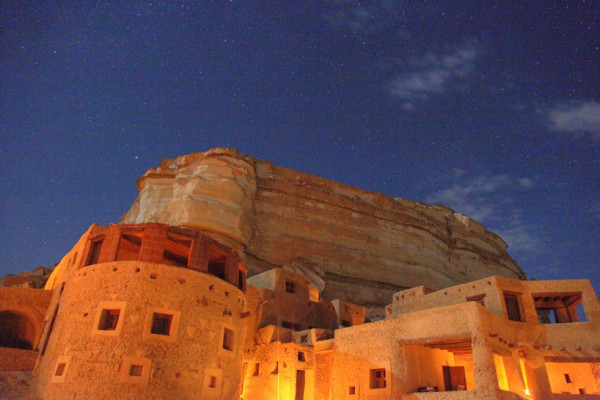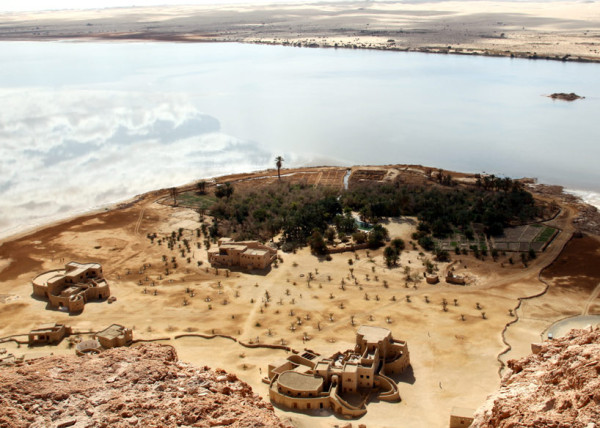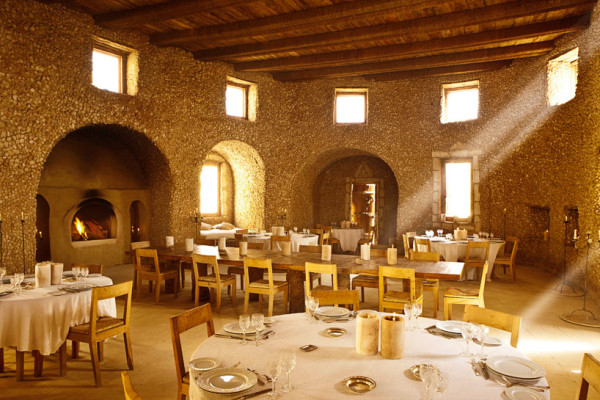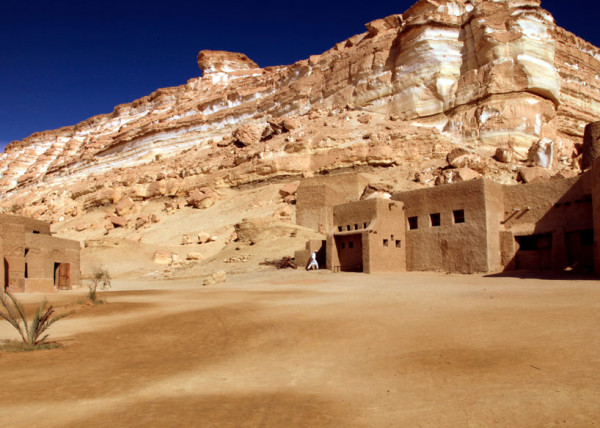When it comes to green building, usually the oldest, cheapest methods to reduce energy use perform better than high-tech materials. In Egypt, near the Libyan border, a hotel is proving this theory by using age-old building techniques that have been used to protect people from the harsh desert climate for more than 10,000 years.
The Adere Amellal Hotel, perched between the shore of Lake Siwa and a high desert mesa, may be one of the most energy efficient, sustainable hotels in the world. Much of this performance comes from not bothering with energy-sucking amenities such as television, wifi, phone service or even electricity. Instead, the eco-lodge is an ancient structure that has been renovated by the group Environmental Quality International (EQI), using the same methods that were invented by some of the planet’s earliest civilizations.

Located on the Siwa Oasis, the hotel is built with thick walls made of kershef, a mixture of rock salt and mud, along with stone masonry that had crumbled over the centuries. Part of the structures was carved out of the adjacent bluff, as well. With the restoration by EQI, the massive earthen walls help absorb the intense desert heat during the day, keeping the interiors shaded and cool, and radiating the heat into the clear, chilly air at night.

The eco-hotel is meant as a place for guests to retreat from the modern world and experience life as it was lived before electricity and the industrial age. In the evenings, wood-burning stoves provide heat and oil lamps and candles provide the only source of light. The beds are made of rammed cotton and hand-crafted wooden frames.
Windows throughout the collection of buildings are placed to allow the greatest amount of ventilation, making use of the desert breezes. In between the structures, courtyards have been built to encourage guests to sit outside after the sun sets.

Though there are few modern amenities, the hotel does not skimp on the cuisine. Through the Siwa Sustainable Development Initiative, there has been a revival of the old organic farming techniques to make best use of the land and the precious oasis water without depleting the soil. The project, which includes a crop pre-financing and cattle-financing plan, is expected to benefit 300 to 450 farmers and 50 off-farm workers.

In the nearby town of El Gari, a two-year renewable-energy pilot demonstration project is being implemented to build 25 biogas digesters that will help wean the region off of imported fuel and fertilizers. The digesters will produce biogas from organic raw material, such as animal waste, and also produce high-quality organic fertilizer to supplement local farmers’ income. This biogas will replace the non-renewable butane cooking fuel that many Siwans used to have trucked in from the Mediterranean coast.
All told, about 600 Siwans have found gainful employment around the oasis via construction, furniture-making, transportation and the operation of tours. Many the jobs come from the initiative and the regulations demanding that all new development must use traditional building techniques using locally sourced raw materials. With these new jobs, a new generation of craftsmen is beginning to emerge that is independent of the resources that used to be shipped from the Nile Valley.